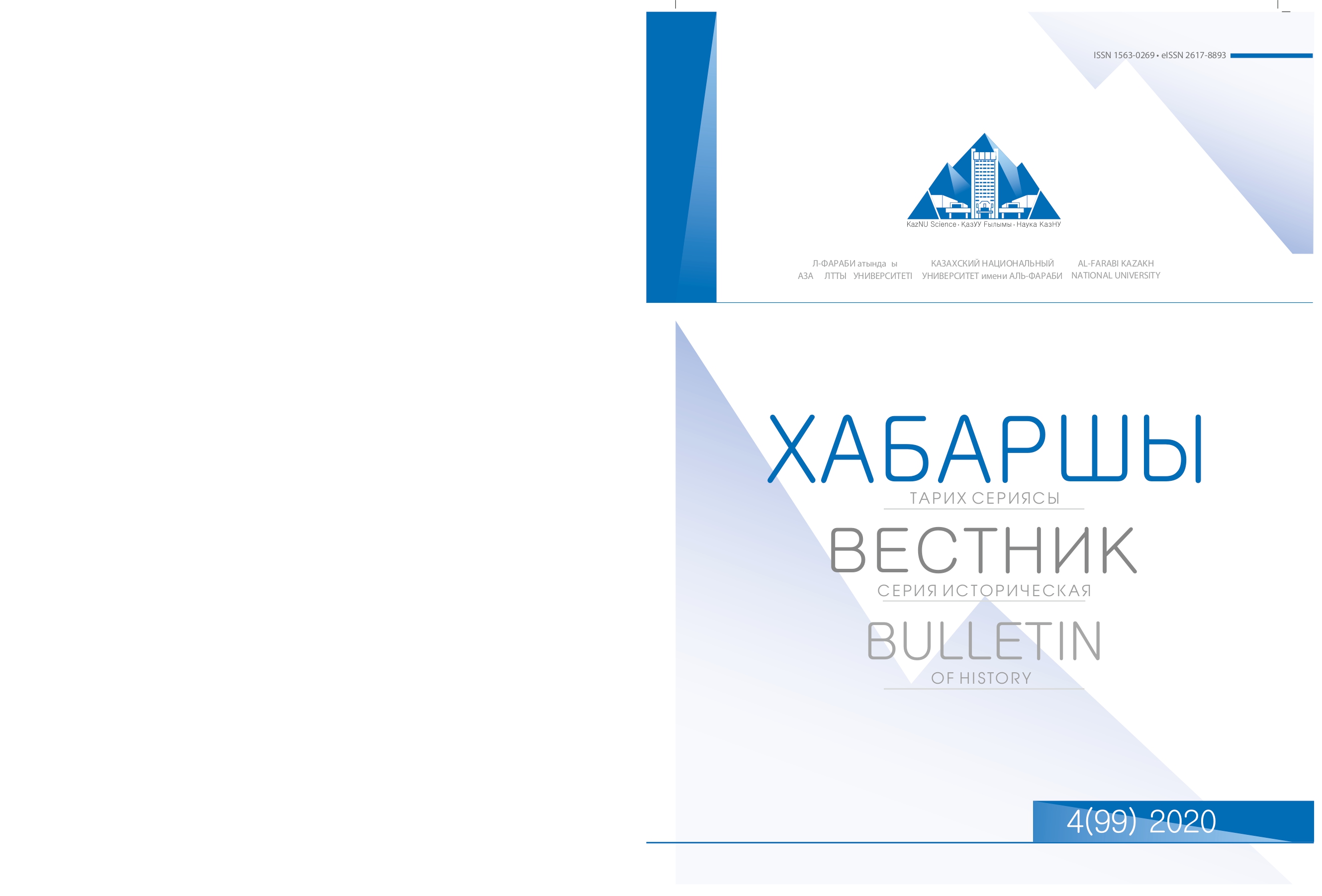THE ROLE OF MIGRATIONS IN THE ETHNOHISTORICAL PROCESSES OF CENTRAL ASIA (the early middle ages)
DOI:
https://doi.org/10.26577/JH.2020.v99.i4.06Аннотация
The major objective of this article is to analyze the migrations of nomadic tribes, which led to a number of transformational changes in the territory of Central Asia in the early Middle Ages. The methods used in the work are structural-functional, comparative-historical, systematization and generalization. The migrations of tribes in the Medieval Period are one of the core issues of research in historical science today. The influence of this phenomena on ethnic processes can be barely revaluated. The study of the migrations of nomadic tribes makes it possible to determine the origins of ethno-glotto-cultural genesis, many political, economic and social events of medieval history. The ethno-historical characteristics of the migration processes which took place among the Turkic tribes of the Middle Ages contributed to the advancement of a number of hypotheses regarding the time of their appearance on the territory of Kazakhstan. Data from historical sources, also the research by scientists, allowed the authors to trace the history of some Kazakh tribes to the early stages of the beginning of the Turkic ethnic community. The conclusion of the study is migratory movements of tribes were a frequent phenomenon during the period being studied, which began with the collapse of state formations. They were formed on the basis of the effect of inner and outer factors associated with climatic, economic, demographic and political changes. In this regard, it can also be argued that the large movements of medieval tribes played the role of locomotives in the history of peoples. Key words: migration, ethnic processes, Turkic tribes, ethnonym, Central Asia




